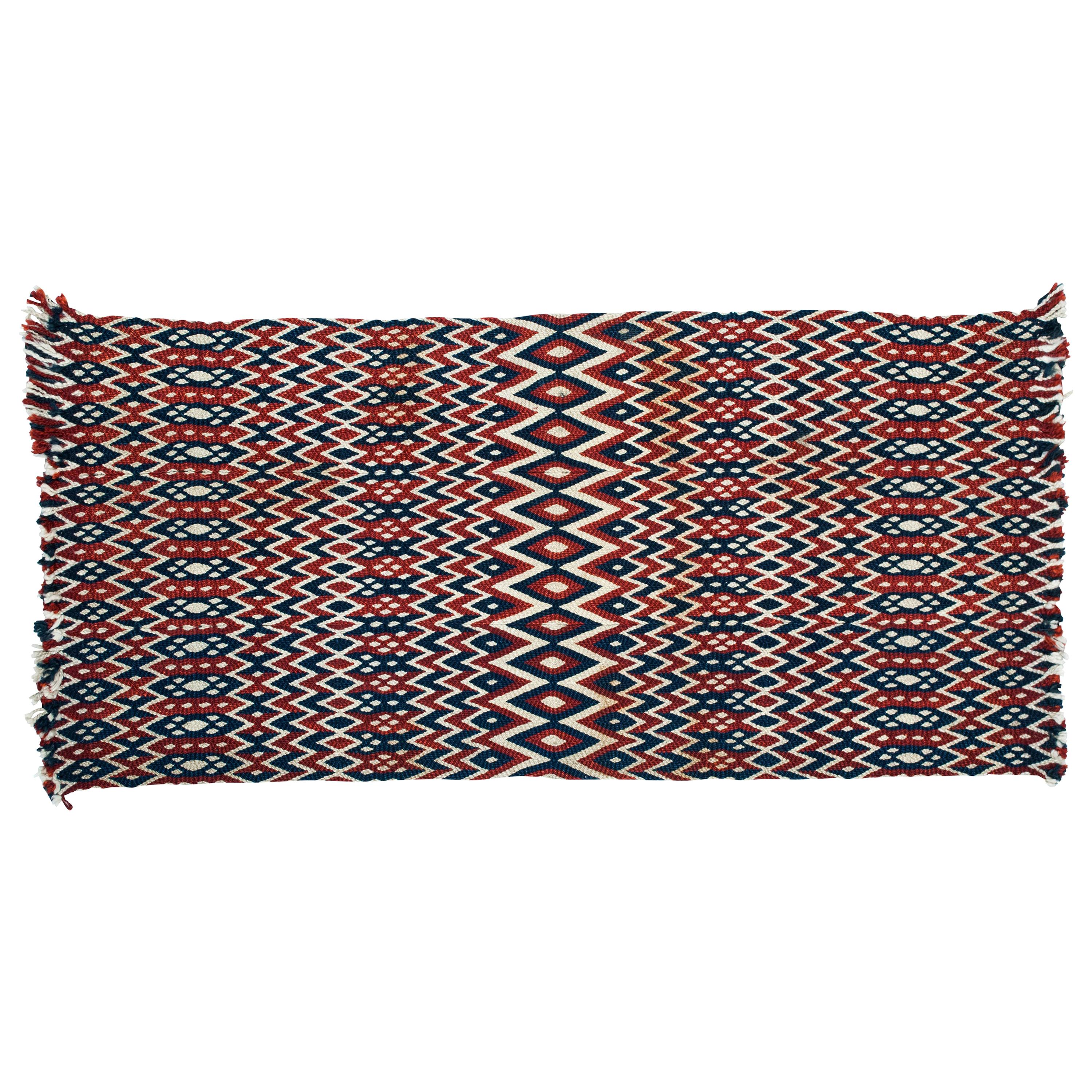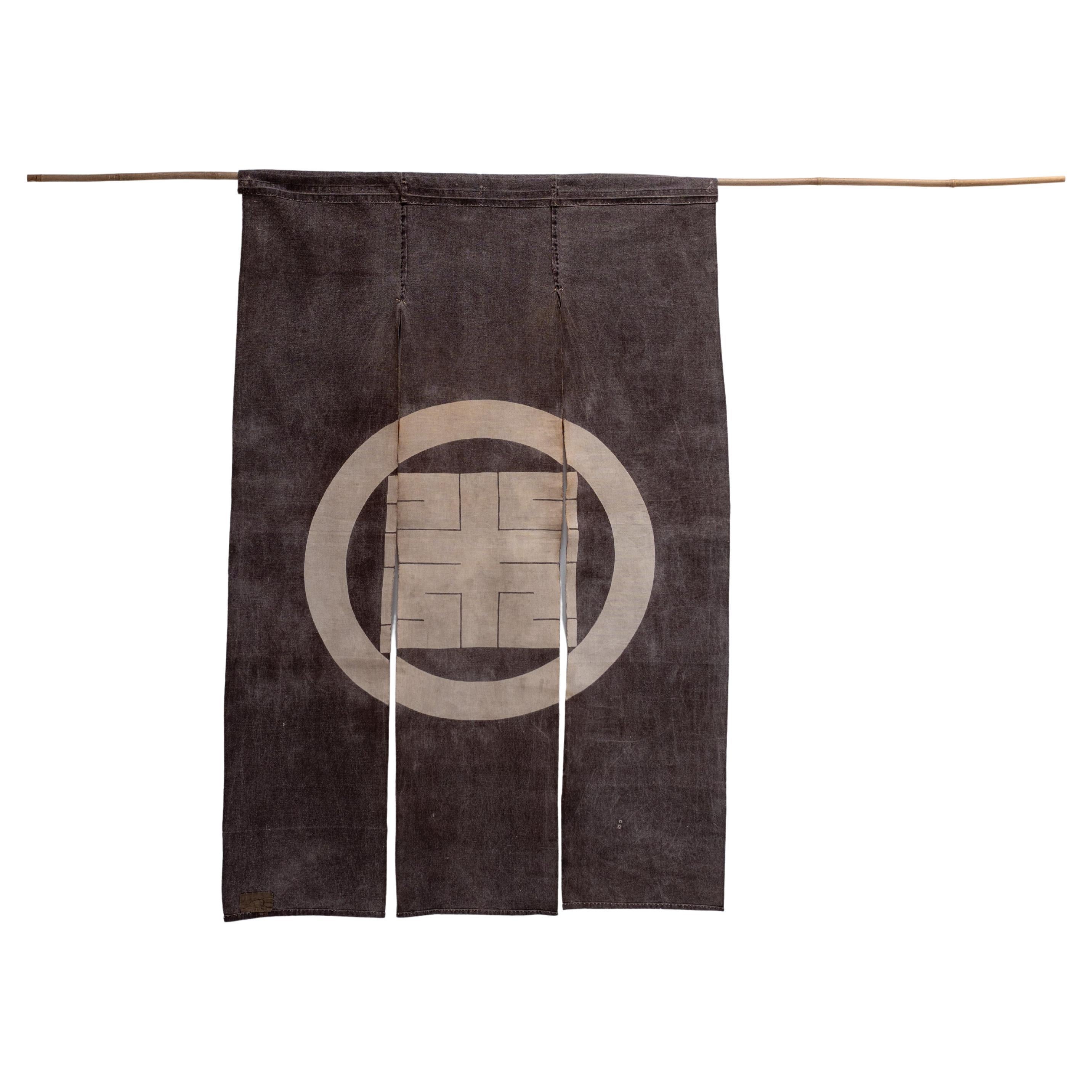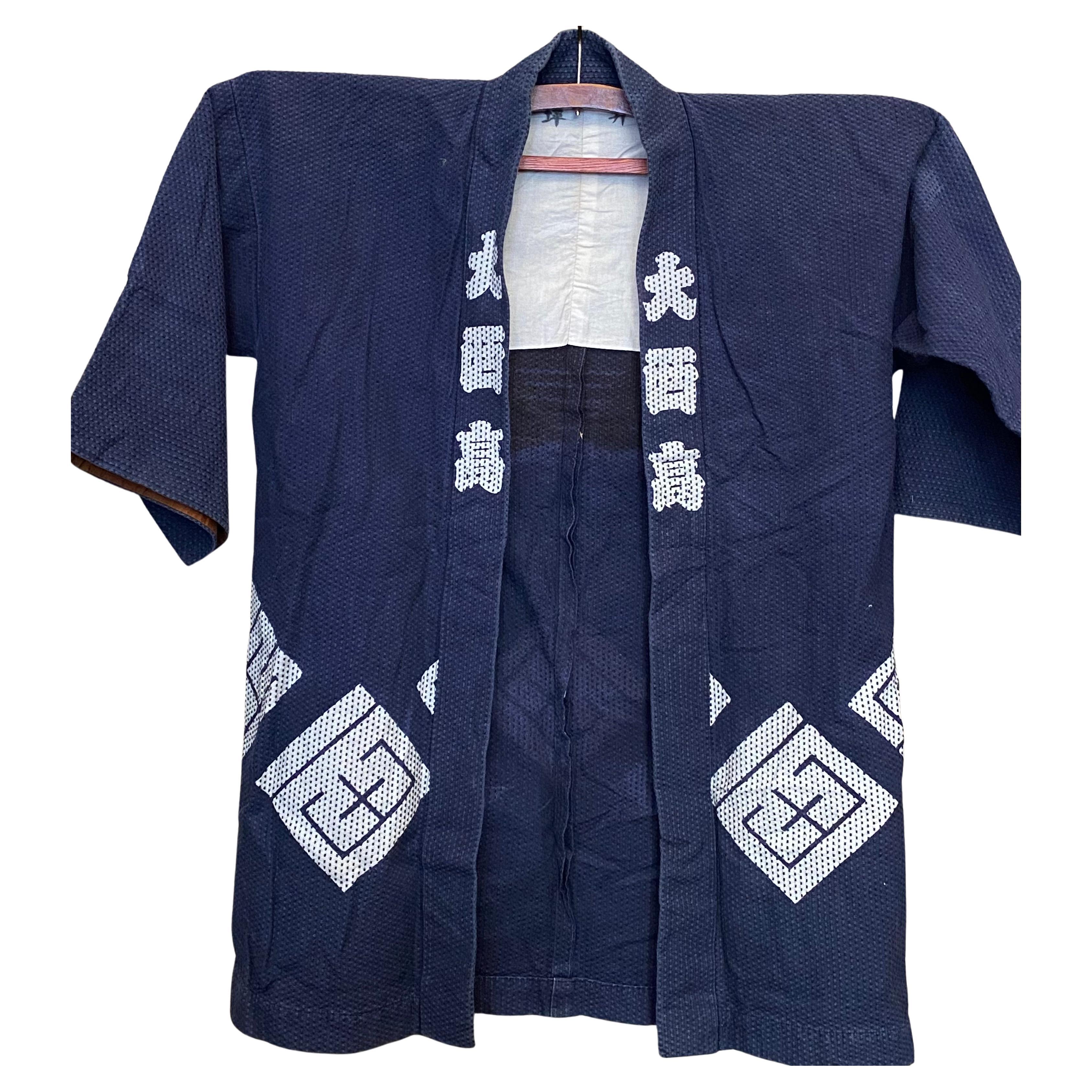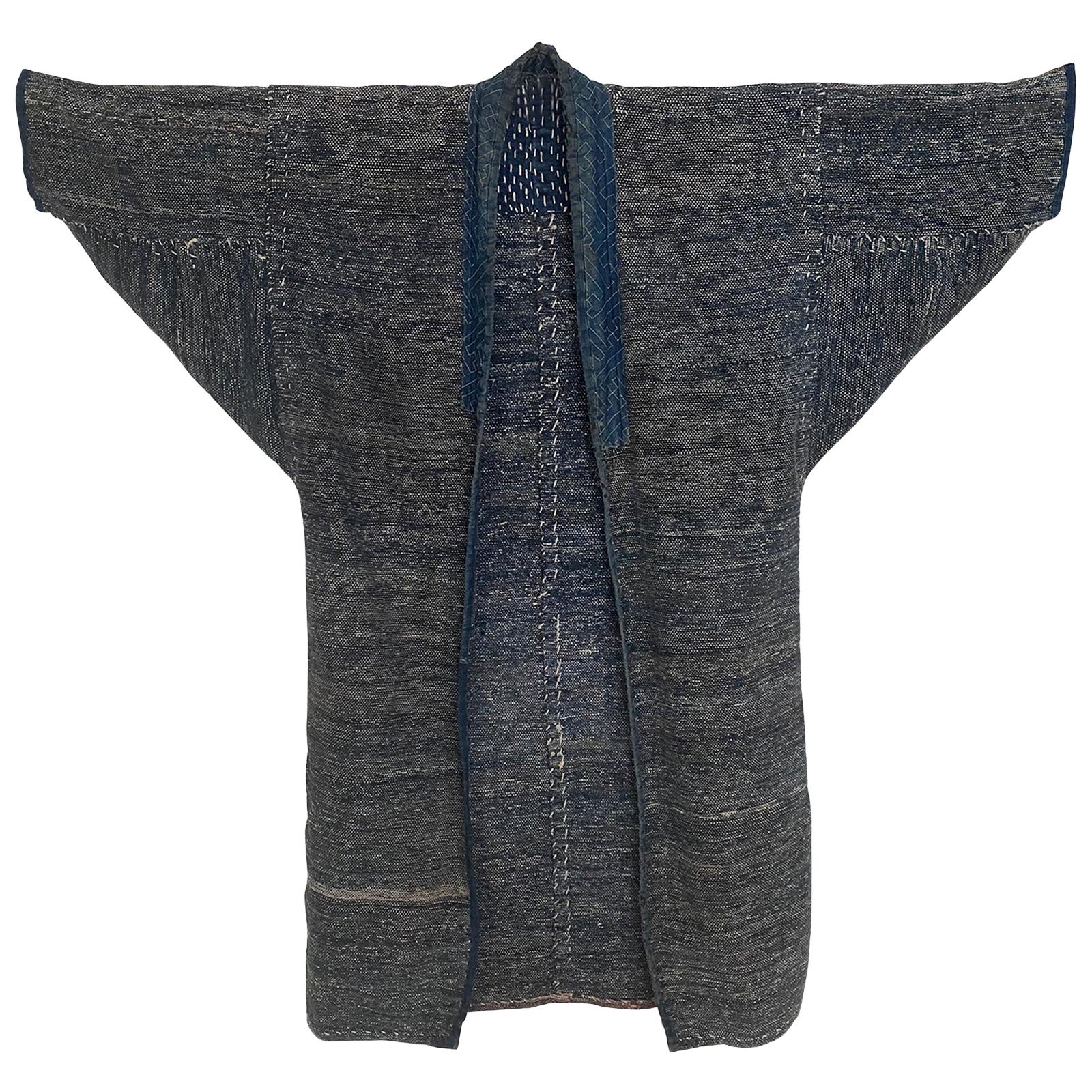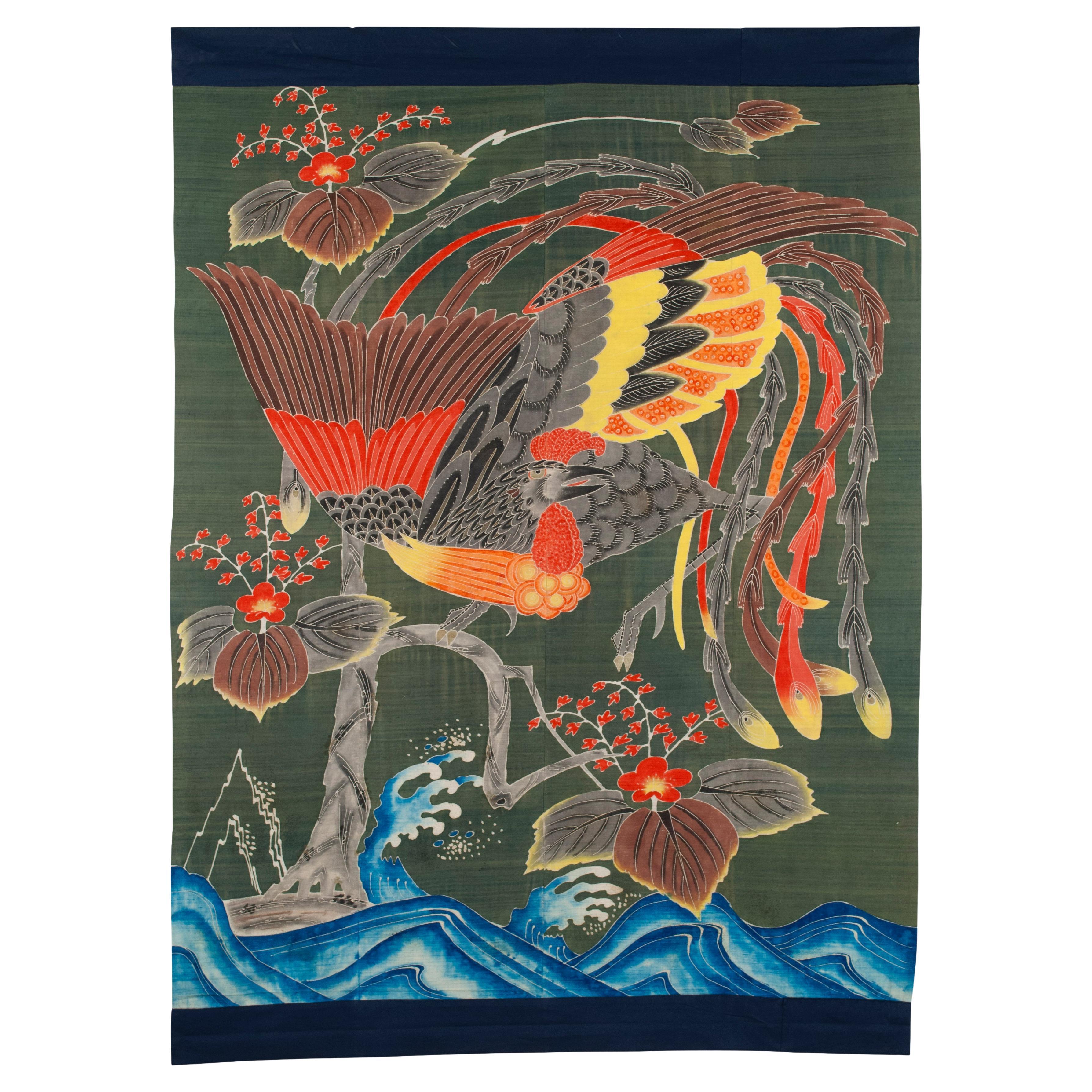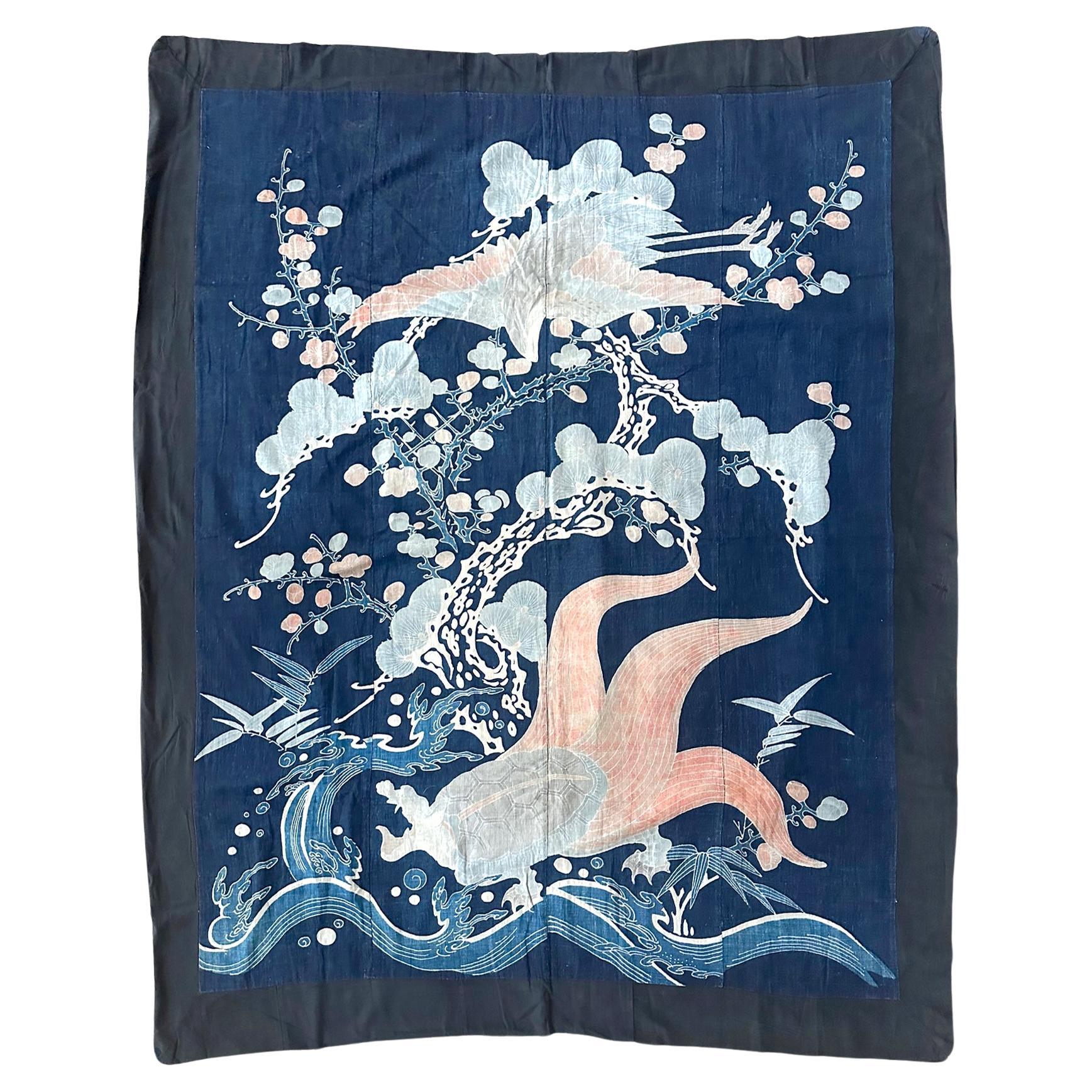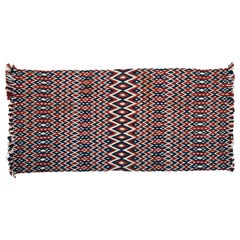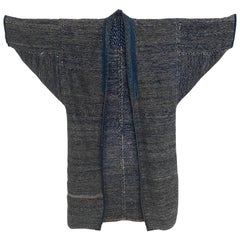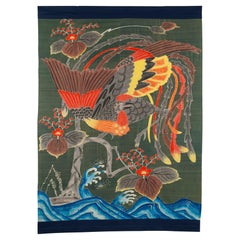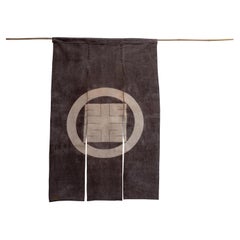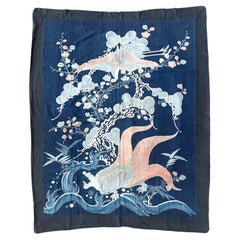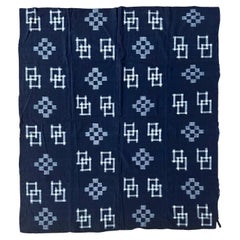Items Similar to Japanese Horse Trapping, "Uma-No-Haragake", Tsutsugaki, Cotton, Meiji Period
Want more images or videos?
Request additional images or videos from the seller
1 of 9
Japanese Horse Trapping, "Uma-No-Haragake", Tsutsugaki, Cotton, Meiji Period
$1,675
£1,262.96
€1,455.38
CA$2,323.68
A$2,603.67
CHF 1,355.31
MX$31,851.88
NOK 17,203.13
SEK 16,248.15
DKK 10,864.73
Shipping
Retrieving quote...The 1stDibs Promise:
Authenticity Guarantee,
Money-Back Guarantee,
24-Hour Cancellation
About the Item
Japanese horse trapping, "Uma-No-Haragake", Tsutsugaki, cotton, Meiji period
This type of haragake is called yuiage ("tied up"). The central portion covered the belly of the horse and the long panels divided in two at both ends, which were tied on the back and left hanging along the flanks. Tsutsugaki, hand painted paste resist, double mon with chrysanthemums on each corner, framed with two borders. Tsutsugaki stripe flaps on both sides. This type of yuiage is still seen on Nambu horses in the annual procession of horses called Chagu Chagu Umakko in the city of Morioka in Iwate. Colors are a little subdued due to age.
- Dimensions:Height: 27.5 in (69.85 cm)Width: 93 in (236.22 cm)Depth: 1 in (2.54 cm)
- Style:Meiji (Of the Period)
- Materials and Techniques:
- Place of Origin:
- Period:
- Date of Manufacture:Early 20th Century
- Condition:Wear consistent with age and use. Minor losses. Minor signs of wear, frayed edge, smal stain, small repairable tear on one side, otherswise in good condition.
- Seller Location:Point Richmond, CA
- Reference Number:Seller: GUJP06281stDibs: LU1778222316612
About the Seller
5.0
Platinum Seller
Premium sellers with a 4.7+ rating and 24-hour response times
Established in 1999
1stDibs seller since 2015
686 sales on 1stDibs
Typical response time: 2 hours
- ShippingRetrieving quote...Shipping from: Point Richmond, CA
- Return Policy
Authenticity Guarantee
In the unlikely event there’s an issue with an item’s authenticity, contact us within 1 year for a full refund. DetailsMoney-Back Guarantee
If your item is not as described, is damaged in transit, or does not arrive, contact us within 7 days for a full refund. Details24-Hour Cancellation
You have a 24-hour grace period in which to reconsider your purchase, with no questions asked.Vetted Professional Sellers
Our world-class sellers must adhere to strict standards for service and quality, maintaining the integrity of our listings.Price-Match Guarantee
If you find that a seller listed the same item for a lower price elsewhere, we’ll match it.Trusted Global Delivery
Our best-in-class carrier network provides specialized shipping options worldwide, including custom delivery.More From This Seller
View AllEarly 20th Century Tibetan Horse Trapping, West Tibet
Located in Point Richmond, CA
Early 20th century Tibetan horse trapping, West Tibet
This robust and graphically dazzling textile from the Tibetan plateau would have been used as either an under or over-saddle ...
Category
Early 20th Century Tibetan Tribal Textiles
Materials
Wool
Saki-Ori Farmers Coat, Northern Japan, Meiji Period
Located in Point Richmond, CA
Saki-ori farmers coat, Northern Japan, Meiji period
A very heavy and substantial saki-ori coat, made of cotton with an indigo kasuri lapel. Several patches of hand sewn stitching ...
Category
20th Century Japanese Meiji Textiles
Materials
Cotton
Rare Antique Formal Japanese Silk Tsutsugaki Futon Cover
Located in Point Richmond, CA
Rare Antique Formal Japanese Silk Tsutsugaki Futon Cover
An exceptional example of tsutsugaki from the late Meiji period. The abstract rendering of the auspicious phoenix and paulo...
Category
Antique Late 19th Century Japanese Meiji Tribal Art
Materials
Cotton, Silk
Rare Antique Japanese Oversized Sleeping Kimono (Yogi)
Located in Point Richmond, CA
Rare Antique Japanese Oversized Sleeping Kimono (Yogi)
This is the outer shell of a type of shaped sleeping kimono known as a yogi. Yogi were in more common use during the Edo and M...
Category
Antique Late 19th Century Japanese Meiji Tribal Art
Materials
Cotton, Linen
Late Meiji Period Sleeping Kimono / Yogi, Japan
Located in Point Richmond, CA
Late Meiji Period sleeping Kimono / Yogi, Japan
Yogi are a type of oversized sleeping kimono traditionally used in Japan. This kimono would have b...
Category
Early 20th Century Japanese Tribal Textiles
Materials
Cotton
Early 20th Century Wool Apron 'Pangden, ' Western Tibet
Located in Point Richmond, CA
Early 20th century wool apron (pangden), Western Tibet
In original condition, four panels woven on a back-strap loom, stitched together and worn as an apron among the Tibetans of th...
Category
Early 20th Century Tibetan Tribal Textiles
Materials
Wool
You May Also Like
Fabric Divider, Cotton Noren with Kakumoji Character, Japan, Early 20th Century
Located in Tokyo, Tokyo
This is a traditional Japanese noren (fabric shop curtain) dating to the Taisho period (1912–1926), crafted from cotton dyed with persimmon tannin (kakishibu). Over time, the dye has...
Category
Early 20th Century Japanese Textiles
Materials
Cotton
Japanese Antique Hanten "Onishiko" with Cotton showa (around 1960s)
Located in Paris, FR
Hanten is a type of traditional Japanese garment that is often referred to as a "short coat" or "jacket". `it has a loose, kimono-like design with a straight collar and is typically ...
Category
Vintage 1960s Japanese Antiquities
Materials
Cotton
Antique Large Japanese Futon Cover with Resist Yuzen Dye
Located in Atlanta, GA
A large unframed Japanese Futonji textile art circa late 19th century toward the end of the Meiji period. Seamed together from four vertical sections of cotton in deep indigo color, ...
Category
Antique 1890s Japanese Meiji Textiles
Materials
Cotton
Japanese Textile Panel Double Ikat Kasuri Futon Cover
Located in Atlanta, GA
A Japanese woven cotton textile panel with white pattern on indigo background circa 1900-20s (end of Meiji to Tasho period). The panel was joined by four vertical stripes and was tra...
Category
Early 20th Century Japanese Meiji Textiles
Materials
Cotton
Japanese Textile Panel Double Ikat Kasuri Futon Cover
Located in Atlanta, GA
A Japanese woven cotton textile panel with white pattern on indigo background circa 1900-20s (end of Meiji to Tasho period). The panel was joined by four vertical stripes and was tra...
Category
Early 20th Century Japanese Meiji Textiles
Materials
Cotton
Uzbek Textile Wool & Silk Horse Traping, Late 19th Century
Located in Ferrara, IT
This is an antique Uzbek suzani horse cover woven during the end of the 19th century that
Measures 160x150 in size. This piece was made using parts from different wool and silk tex...
Category
Antique Late 19th Century Uzbek Other Textiles
Materials
Wool, Silk
More Ways To Browse
Asian Horse Art
Framed Textile Panel
Japanese Meiji Panel
Framed Japanese Textiles
Horse Tie
Hand Painted Ties Vintage
Asian Style Sofa
Asian Thread Embroidery
Large Suzani
Chinese Silk Embroidery
Large Suzani Textile
Prayer Mat
Antique Japanese Textiles
Japanese Indigo
Chinese Brocade
Suzani Embroidery Panel
Embroidered Silk Screen
Yves Saint Laurent Africa
